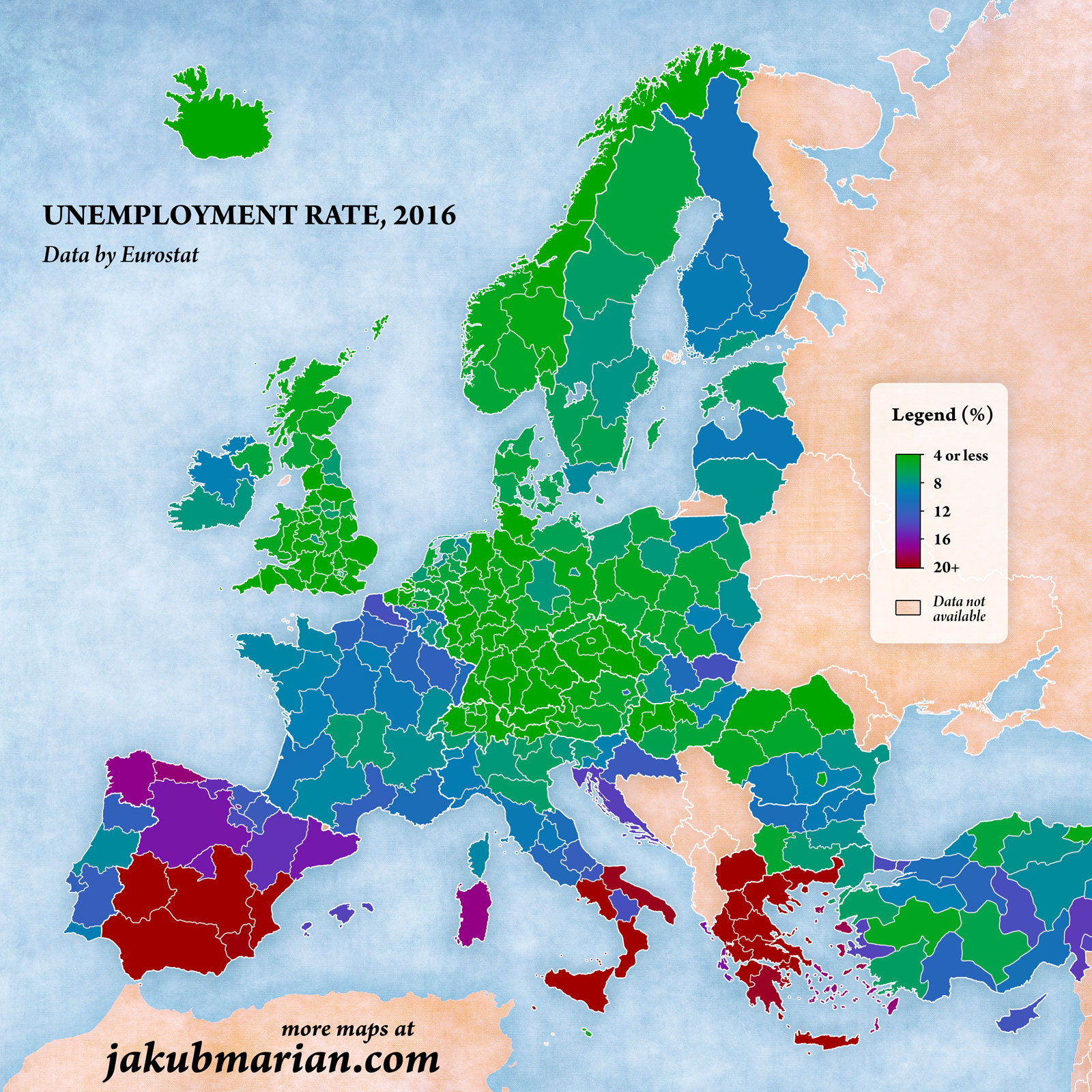Eurostat defines an unemployed person as a person aged 15-74 who is:
- without work during the reference week,
- available to start work within the next two weeks (or has already found a job to start within the next three months),
- actively having sought employment at some time during the last four weeks.
(All three conditions must be fulfilled simultaneously.) Simply put, an unemployed person is someone who currently does not have a job, is in principle capable of having a job, and is actively trying to find a job. Therefore, unemployment statistics do not include people who choose not to seek employment although they would be physically able to, but the number of such people is relatively low (less than 3% of total population in most countries), and a large fraction of them are full-time students.
The following map is based on data by Eurostat from 2016. Note that Eurostat provides annual unemployment rates based on a survey that takes place quarterly, without clearly explaining the methodology used (they probably take the average of the results):

The top three regions with the lowest unemployment rate in Europe were Lower Bavaria in Germany (2.0%), Prague in the Czech Republic (2.2%), and Upper Bavaria in Germany (2.4%). The highest unemployment rate was in Western Macedonia in Greece (31.3%), Melilla in Spain (30.8%), and Western Greece (29.8%).
 Tip: Are you a non-native English speaker? I have just finished creating a
Tip: Are you a non-native English speaker? I have just finished creating a  Web App
Web App
